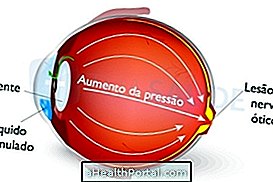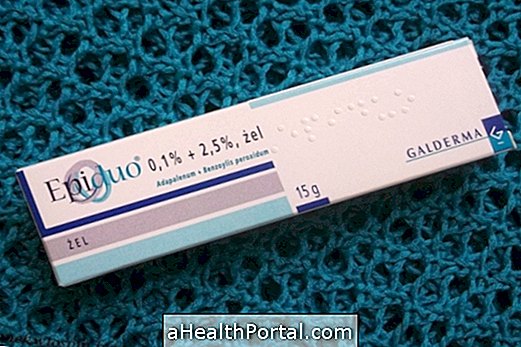Congenital glaucoma is a rare eye disease that affects children from birth to age 3, caused by increased pressure inside the eye due to fluid accumulation, which can affect the optic nerve and lead to blindness when left untreated.
The baby born with congenital glaucoma has symptoms such as cloudy and swollen cornea and enlarged eyes. In places where there is no eye test, it is usually only detected around 6 months or later, which makes difficult the best treatment and visual prognosis of the child.
For this reason, it is important for the newborn to have eye test performed by the ophthalmologist by the end of the first trimester of life. In case of confirmation of congenital glaucoma, the ophthalmologist may prescribe eye drops to decrease intraocular pressure, but this is done to decrease pressure before surgery. The treatment consists of a surgery through the goniotomy, trabeculotomy, trabeculectomy or implants of drainage of intraocular fluid.
Pictures of congenital glaucoma


How to treat congenital glaucoma
To treat congenital glaucoma, the ophthalmologist may prescribe eye drops to decrease intraocular pressure to decrease pressure before surgery. The surgery is done through goniotomy, trabeculotomy, trabeculectomy or implants of drainage of the intraocular fluid. See the top eye drops to treat Glaucoma and its side effects.
Symptoms of congenital glaucoma
Congenital glaucoma can be identified through some symptoms such as:
- Up to 1 year: The cornea of the eye becomes swollen, blurred, the child shows discomfort in the light and tries to cover their eyes in the light;
- Between 1 and 3 years: The cornea increases in size and it is common for the child to be praised for the large eyes he possesses;
- Up to 3 years: Same signs and symptoms. The eyes will only grow by increasing the pressure until this age.
Other symptoms such as excessive secretion of tears and red eyes may also be present in congenital glaucoma.
Diagnosis of congenital glaucoma
Congenital glaucoma can be diagnosed through a thorough eye examination that includes measuring the pressure inside the eye and examining all parts of the eye such as the cornea and optic nerve, for example. Learn more about glaucoma screening.
Generally, glaucoma is caused by increased pressure in the eye, known as intraocular pressure. The increase in pressure occurs because the eye produces a liquid called aqueous humor and, as the eye is closed, this liquid needs to be drained naturally. When the drainage system does not work properly, the liquid can not be drained out of the eye and thus the pressure inside the eye increases.
However, although increased pressure is the most common cause, there are cases where there is no elevated intraocular pressure, and in these cases the disease is caused by malfunctioning of blood vessels in the optic nerve, for example.




















